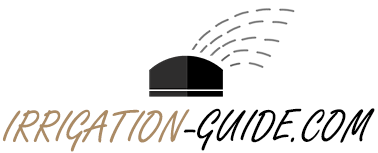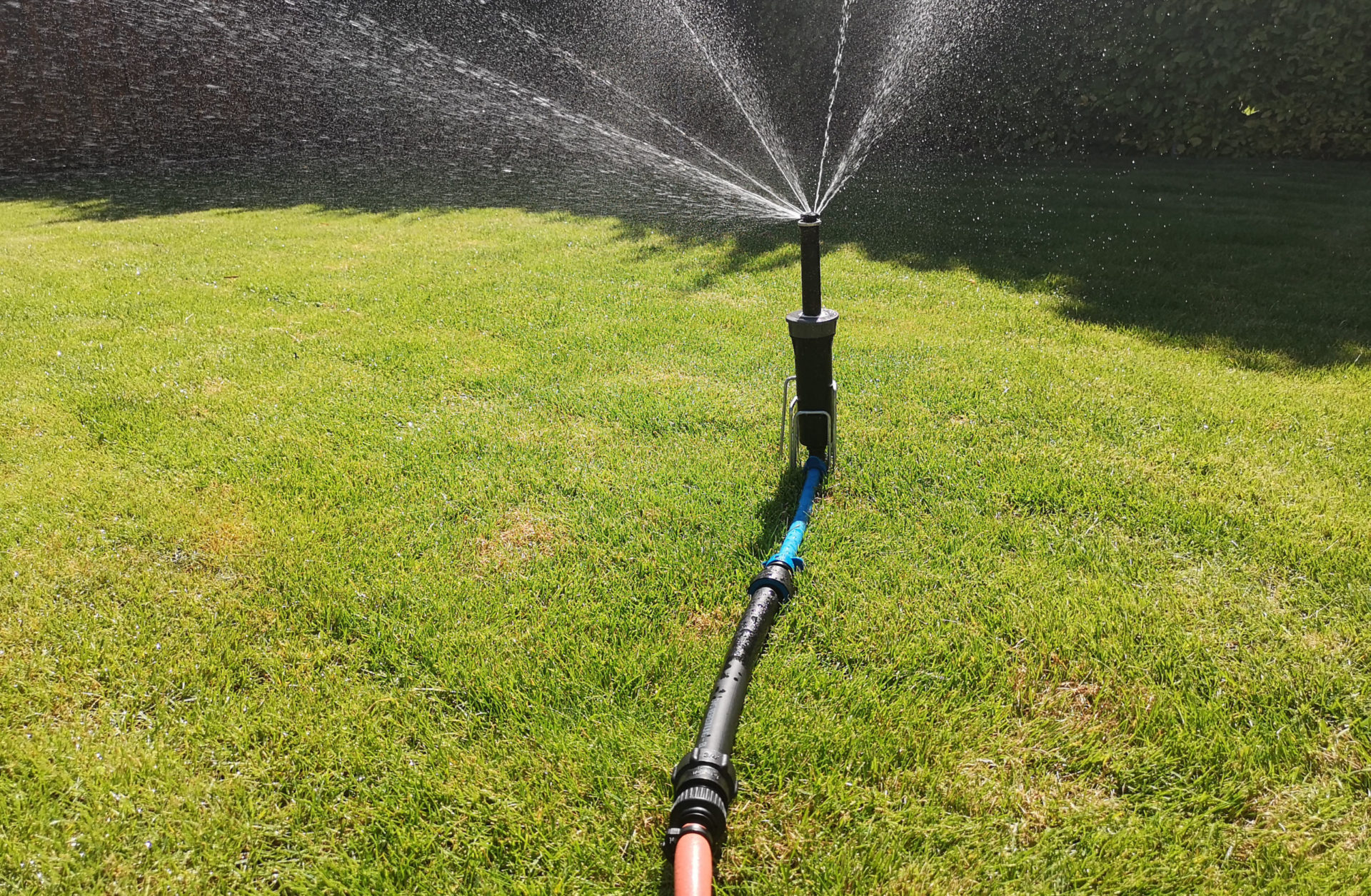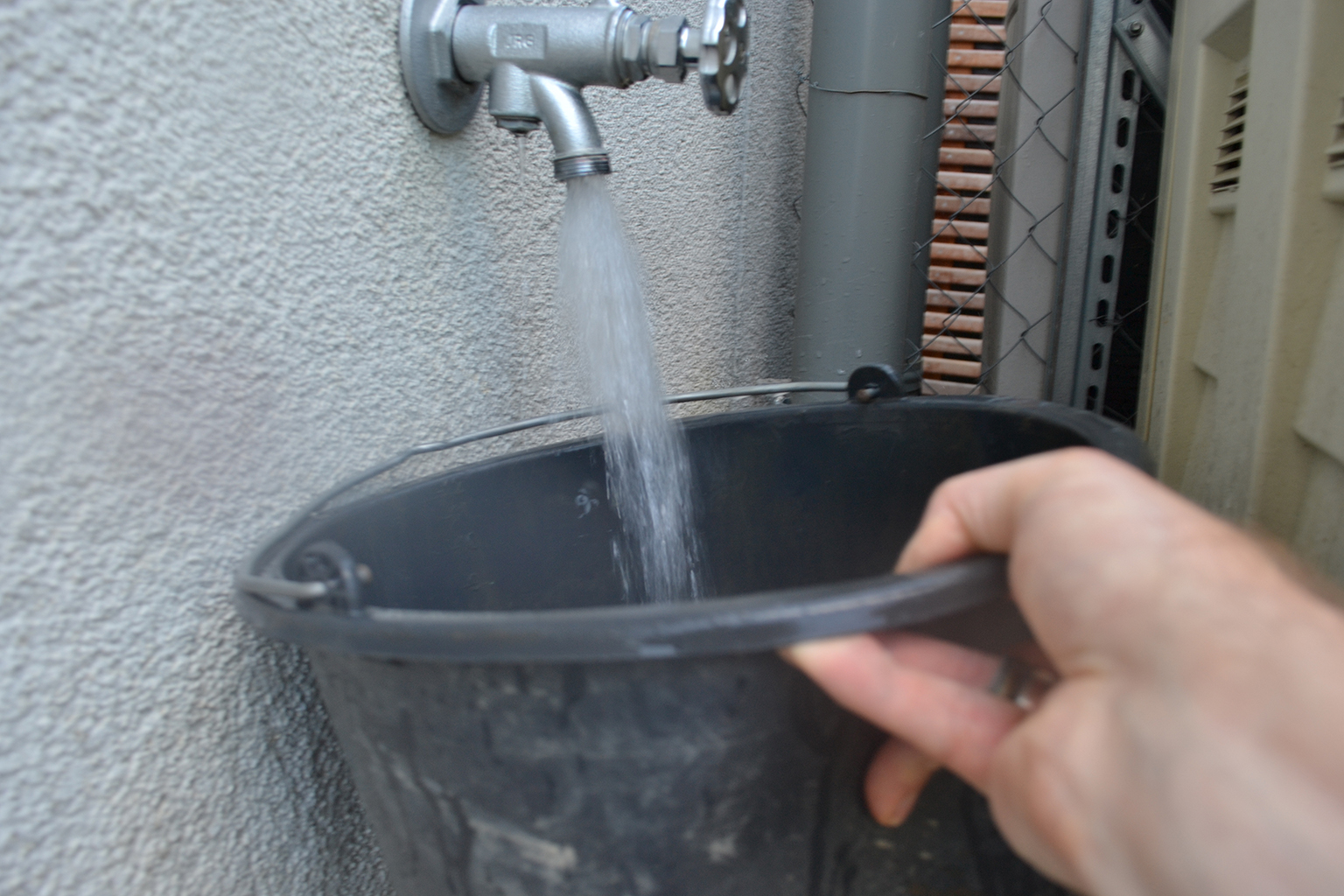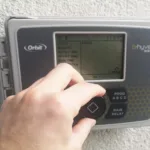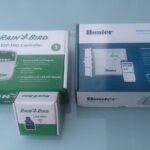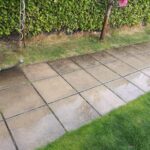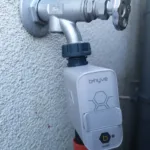You can put together a test environment for lawn irrigation or for drip irrigation yourself with reasonable costs and effort.
Lawn irrigation
For testing, you need a few feet of irrigation tubing (Amazon Link) and the appropriate connectors to connect the pipeline to the tap or a garden pump. In terms of connection, you have two options:
- Connect the pipeline pipe directly to the tap or the garden pump
- Connect the pipeline pipe to the water tap or the garden pump using a garden hose
Connect the pipeline pipe directly
For option 1, you simply need the right connector to connect the external thread of the garden faucet to the pipeline, usually a connection piece 3/4 inch internal thread to 25 mm pipeline pipe. It works practically the same with a pump: Either you use a connector 1 inch external thread to 25 mm to connect the internal thread of the pump directly, or you use a pump connector and a connector 1 inch internal thread to 25 mm.
This is what the connection to the faucet looks like:

Pipeline pipe connected directly to the faucet via a connector
The disadvantage of this variant is that you may need a very long piece of pipe if you have to cover a longer distance from the water connection to the test location. In addition, the pipe is quite stubborn and awkward to handle and you have to be careful not to accidentally kink it during testing.
Connector fittings at Amazon:
Auto Amazon Links: No products found. No products found.
Connect the pipeline pipe using a hose
Option 2 is more convenient: First of all, a hose is connected to the water source, which then leads to the test location and where it merges into the pipeline. The connection to the faucet or the pump connection piece is made via a suitable tap connector. Depending on the thread size with 3/4 inch or 1 inch internal thread. You can use a 1/2 inch or a 3/4 inch hose. The 1/2 inch hose naturally leads to very strong pressure losses and is therefore less suitable when it comes to testing under real conditions as far as possible. If you just want to attach a sprinkler for a test or just test drip irrigation, then the 1/2 inch hose is sufficient.
Depending on whether you choose the 1/2 inch or 3/4 inch hose, the tap connector on the hose connection side must also be suitable for 1/2 inch or 3/4 inch. A suitable 1/2 inch or 3/4 inch hose connector is coupled to the tap connector and the hose is clamped into the hose connector. An identical hose connector is attached to the other end of the hose and this is also connected to a tap connector. In this case I use a tap connector with a 1 inch thread. Finally, the fitting connection piece is screwed onto the thread of the tap connector (1 inch external thread to 25 mm) and connected to the pipeline in this.
The connection to the tap is shown step by step below:
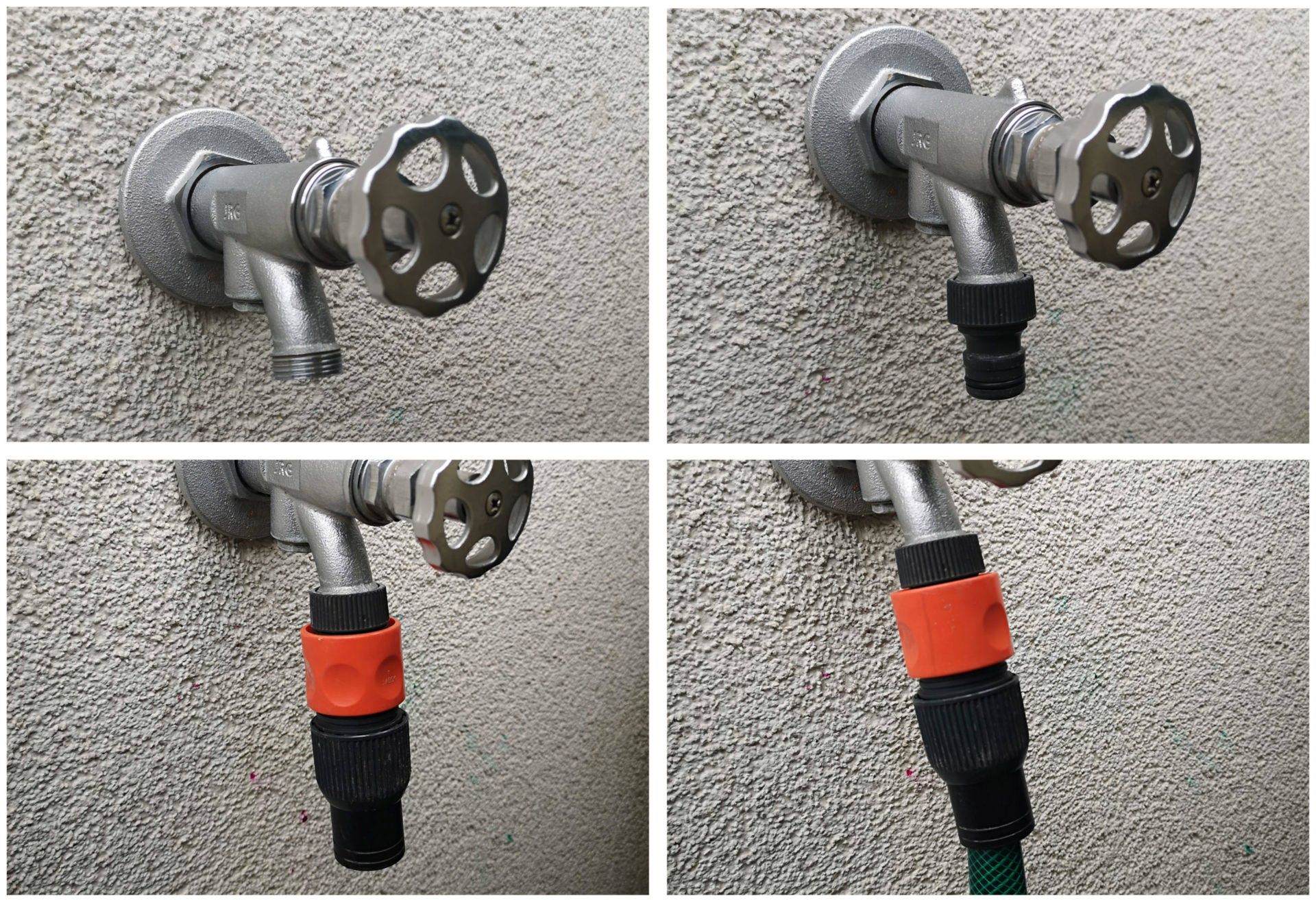
Photo gallery connection of 3/4 inch hose to the tap
And this is how the connection between hose and pipeline pipe works:

This is how the hose and pipe are assembled
In the end it looks like this:
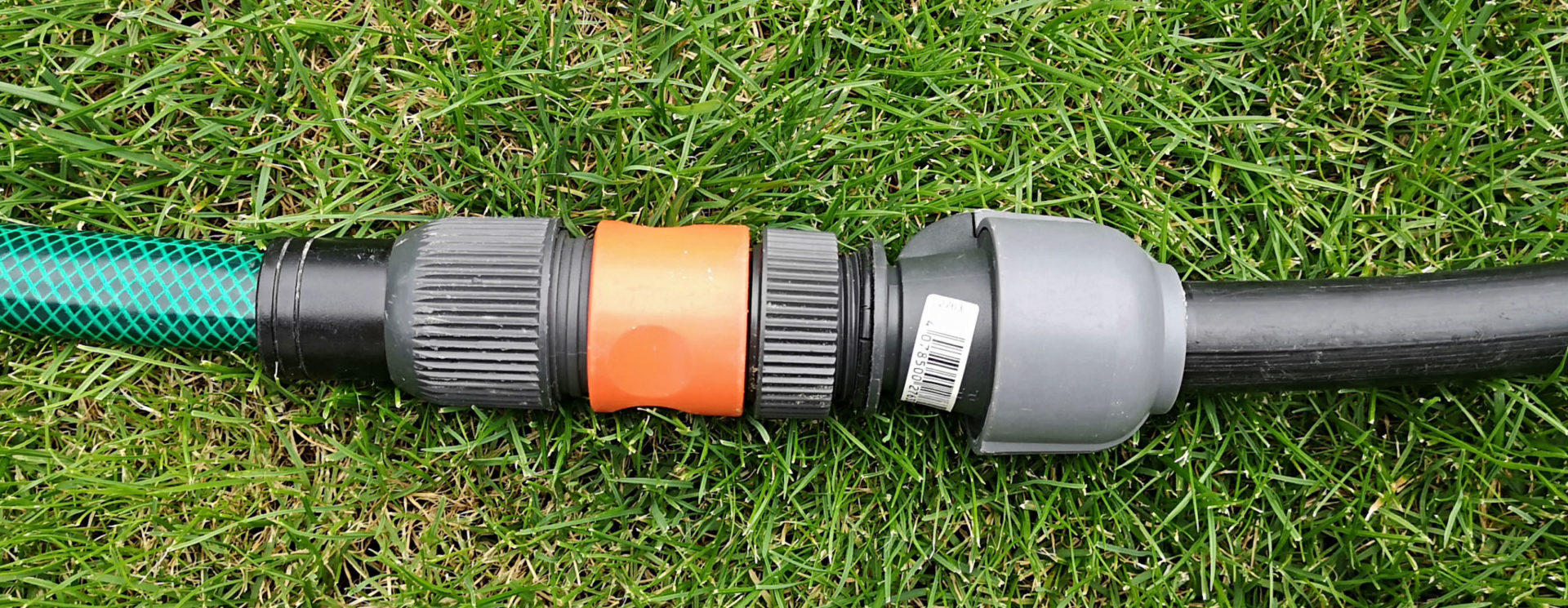
Completed connection
The previously mentioned products for connecting a 3/4 inch hose on Amazon:
Auto Amazon Links: No products found.
Now that you have a pipeline pipe that is ready for use, you can basically use it to test everything that can be attached to such a pipeline. Possible test scenarios are, for example:
- The spray pattern of a particular sprinkler or sprayer
- The throw of a given sprinkler or sprayer
- The performance of the pipeline (how many sprinklers can be operated?)
- How various components work
For tests such as the performance of the pipeline, it is essential to set up the test environment as realistically as possible. The pipeline should have approximately the same length as in real operation and all components used in real operation should also be installed, as these reduce the water pressure.
Drip irrigation
Once you have assembled the test environment for lawn irrigation, drip irrigation is only a small step: Simply connect the pipeline pipe with the appropriate connector (usually 25 mm to 3/4 inch external thread) with a pressure reducer (in this case shown with the Master Unit 1000 from Gardena). The 16 mm drip irrigation pipeline then runs away from the pressure reducer and the various drip irrigation components can then be connected to this for test purposes.

Pressure reducer connected to the pipeline pipe
Alternatively, the pressure reducer can also be connected to a 1/2 inch hose:
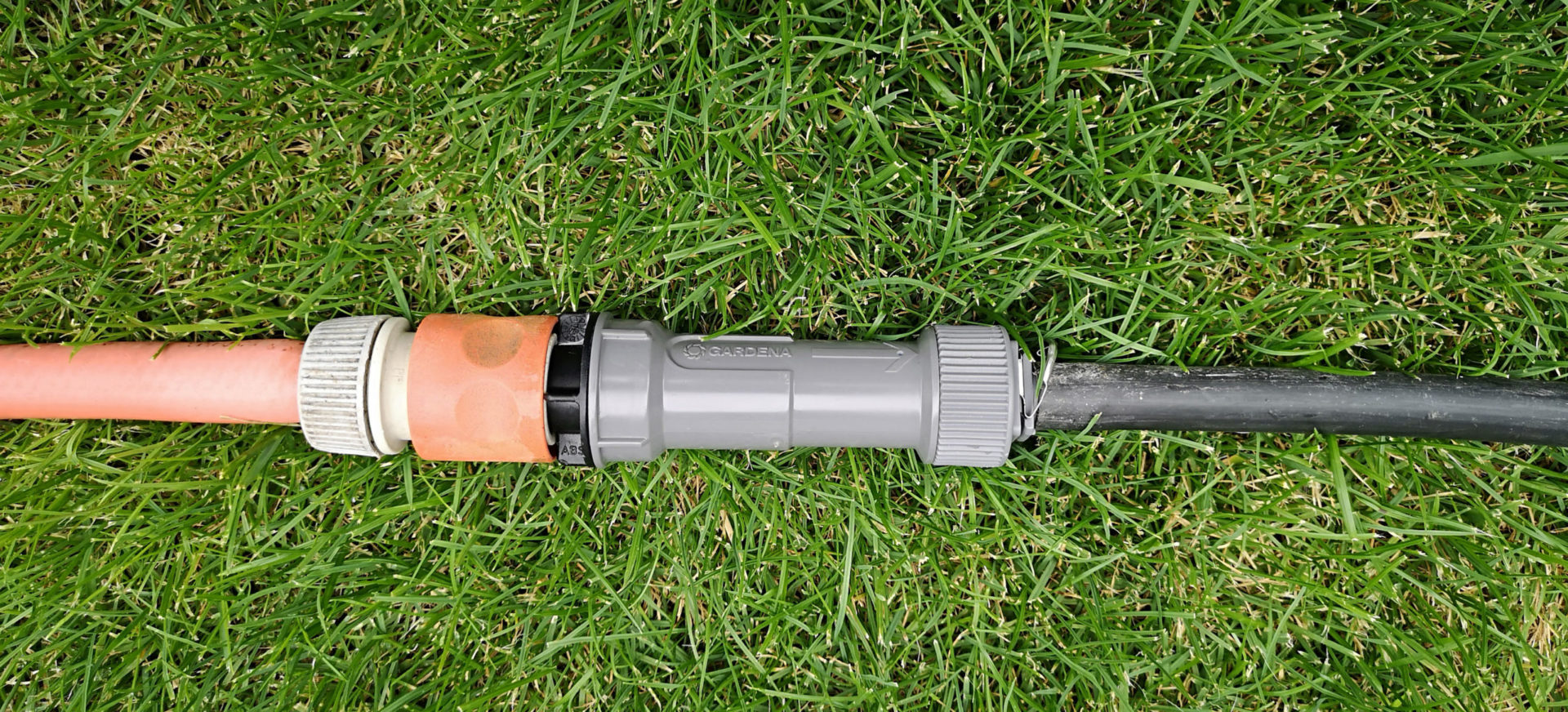
Pressure reducer connected to a 1/2 inch hose
Possible drip irrigation test scenarios are:
- How different drip irrigation sprayers and drippers work
- How a drip hose works
- The efficiency of the drip irrigation pipeline (how many feet of drip hose or how many drippers and sprayers are possible with it?
